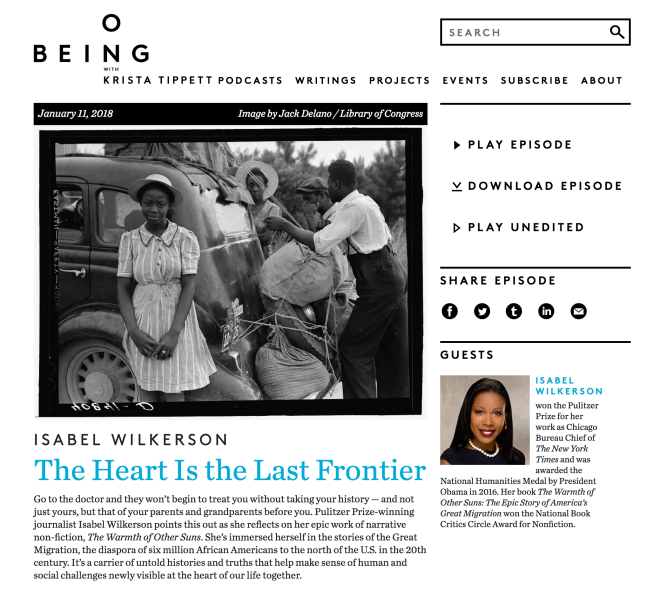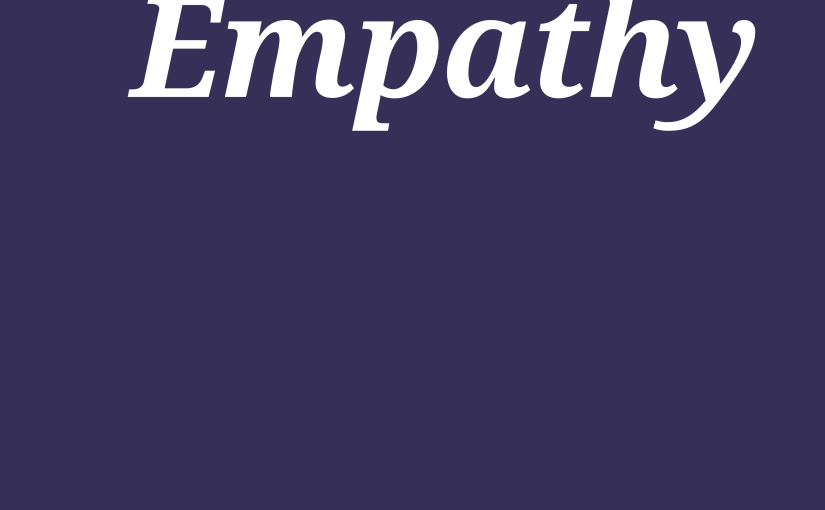This is day 2 of 15 in a short series on inclusive design. If you missed it, start with day 1 here.
A key principle of inclusive design is broadening perspectives and building empathy. What is empathy? It’s the ability to understand and share the feelings of others.
To break it down even more, via Empathy by Roman Krznaric, we can experience two common types of empathy: 1) affective, where you feel the same emotions as others and 2) cognitive, where you’re able to put yourself in their shoes.
Start With a Genuine Connection
Empathy of any flavor is crucial to creating good designs and successful products because it means connecting with people — with your customers. And, these connections take effort and attention.
Airbnb’s Joe Gebbia explains the vision for… “a culture of sharing in which design helps foster community and connection instead of isolation and separation.” — via Airbnb.design.
Airbnb found out early on the value of using empathy as the starting point to work directly with their customers to find their pain points. They’ve used empathy to drive important changes at various times in the company’s short history. Airbnb now acts as a prime example for other organizations to follow to create value from a close connection with their community. (Examples include improving hosts’ listings by providing professional, high-quality photos; fixing UI flows and removing obstacles; and promoting diversity after uncovering racial discrimination. Read the well-documented stories on Inc.com, Fast.co, Fortune, The Verge).
Why are conversations with real people essential? Because reading reports or sorting through statistics isn’t enough. Often when discussing demographics — such as how many site visitors we might have in a segment of the population — someone on my team might point to a graph and say, “Do you see these numbers? Amazing.” It could be an uptick in pageviews on mobile devices, more non-US or non-English-speaking visitors than we expected, or a large cohort of some kind making a certain purchase. This data can get you started to make an informed decision, but it’s just data. As a product designer, the decisions still rests on human judgment and intuition. A judgment that is susceptible to biases.
When you sit down with a real person, however, you can often get straight to the truth. As you see what they see, over their shoulder, while they work through the product flow step by step, and hear: “I don’t get it, what should I do next?” Or, “I can’t get to the screen you showed me — it won’t load on my tablet; just keeps going back and forth.” With WordPress, this can commonly be something like, “What’s a custom menu. Do I need one? I’m not a restaurant.”
People Are Not a Statistic
“Empathy isn’t triggered by a statistic,” said Krista Tippett to her guest Isabel Wilkerson on a recent “On Being” podcast interview, The Heart is the Last Frontier.

I think “changing your heart” is a synonym for overcoming unconscious bias. There are these things that — it’s becoming more conscious about what’s going on inside us and then working with that. Another thing we’re learning is that empathy is — and this is a problem with journalism, frankly — empathy is not triggered by a statistic. — Krista Tippett
It’s looking into the human heart and examining it and allowing ourselves to feel the pain of others. You don’t want to feel your own pain; why would you want to feel someone else’s pain? …It’s an act of love and an act of faith to allow yourself to feel the pain of another. — Isabel Wilkerson
Stories based on facts and historical figures, as those featured in Isabel’s book, are an effective way to build empathy. Stories are powerful. You can’t argue with someone’s story — history is literally his/her story, their story. What you can do is soak it in, breathe it, consider how it overlaps with your experiences. You can break down a personal bias by simply bringing in a fresh source of data, be it a book, podcast, poem, movie, you-name-it.

De-biasing via stories is an activity we practice amongst ourselves at Automattic, where we tell each other what most people wouldn’t know about us when looking at the surface. One of my favorite examples comes from Jan Cavan Boulas, a designer living who moved to the USA for a job, after growing up in the Philippines: How WordPress Changed My Life.
When you hear someone’s voice, or watch their face, you can make a connection with them. When you hear the steps they took on their path, you can follow along. When you experience what they experience — to me — this is the deepest of empathy.
In addition to going from data to judgment to stories — we can also build empathy and broaden our perspectives when we interact with people who aren’t different from us.
Diversity is Essential to Broaden Understanding
Take a look at these amazing “Meet Our Colleagues (aka Automatticians)” videos (YouTube playlist). We’re building a diverse team — already about 675 people across 60 countries and speaking 80 different languages!
Kerry Liu is a software engineer and team leader whom I admire for her organizational skills, clear communication, and technical expertise:
The Automattic inclusive design toolkit explains the principle of a diverse team:
Diversify your team. Homogeneous teams create narrow designs; teams with diverse experiences create more inclusive designs. Be sure that members of your team don’t come from the same culture, age group, gender, or gender expression, and don’t all have similar experiences and educations. If your team is limited and you don’t have the ability to expand, actively seek out people with other perspectives to consult or act as project advisors, and give special consideration to their feedback.
Besides promoting empathy and bringing in fresh perspectives, diverse teams make better decisions, according to Mary Meeker, of VC firm KPCB in their annual “Internet Trends” report.
Rituals and Habits to Build Empathy
So, what can you do to build empathy? Practice rituals and habits like these:
- Listen, care deeply, and be open to making connections with people — whether existing customers, a potential customer, neighbors, friends, and family — everyone fits into this category.
- Seek out new advisors, refresh my mentors, travel someplace new and different, and read a lot more. Tip: ask your peers and community for a diverse set of authors and books — women, minorities, under-represented voices — and not just from the same type of author, or same subject.
- Use the products that you make daily to understand your customers’ point of view, the pain points, the dead ends, and any broken flow.
- Practice de-biasing activities with people you encounter, and those you work with. Don’t assume what you see on the surface is representative of their entire person and life experience.
- Ask active questions and approach everything with an open mind.
- Discover many more practical examples we use at Automattic: How We Build Empathy With Our Customers, from Filippo Di Trapani.
- Find inspiration from the WordPress mobile team’s Quarterly Rituals: Empathy Challenges, by Cate Huston.
For day 3 of 15 of inclusive design, we’ll learn about mismatched conditions with more insights and stories from Kat Holmes and her work at Microsoft.
About this series — In two weeks I’ll give a talk on inclusive design at WordCamp Phoenix 2018. Leading up to the conference I’m publishing notes on voices, stories, products, and other resources: everything I’m learning about this emerging practice. This is day 2 of 15. Read more about the series from day 1.

Timely message from John Maeda:
For another take on my personal mindset of empathy in design, see my short presentation from WordCamp London 2015, Empathy and User-centered Design. I still have a lot to learn to live up to this high standard.
LikeLike